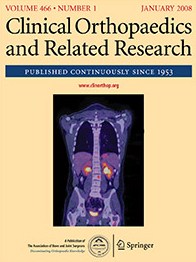
ARTHROPLASTY
No significant difference in 10-yr outcomes between ultrashort & conventional stem in THA
Clin Orthop Relat Res. 2016 Sep;474(9):2008-17212 patients scheduled for bilateral simultaneous total hip arthroplasty had their hips randomized to two different femoral stems; one hip was treated using an ultrashort femoral stem, while the other hip was treated with a conventional femoral stem. Patients were followed-up for a mean of 11.8 years. Significant differences that were observed between groups included lower stress-shielding and greater bone mineral density in Gruen Zones 1 and 7 in the ultrashort stem compared to the conventional stem. Otherwise, the were no significant differences in the other radiographic outcomes, clinical outcomes, or survivorship between groups.
Unlock the full ACE Report
You have access to {0} free articles per month.Click below to unlock and view this {1}
Unlock NowCritical appraisals of the latest, high-impact randomized controlled trials and systematic reviews in orthopaedics
Access to OrthoEvidence podcast content, including collaborations with the Journal of Bone and Joint Surgery, interviews with internationally recognized surgeons, and roundtable discussions on orthopaedic news and topics
Subscription to The Pulse, a twice-weekly evidence-based newsletter designed to help you make better clinical decisions
Exclusive access to original content articles, including in-house systematic reviews, and articles on health research methods and hot orthopaedic topics
Or upgrade today and gain access to all OrthoEvidence content for just $1.99 per week.
Already have an account? Log in


Subscribe to "The Pulse"
Evidence-Based Orthopaedics direct to your inbox.
{0} of {1} free articles
Become an OrthoEvidence Premium Member. Expand your perspective with high-quality evidence.
Upgrade Now












































































